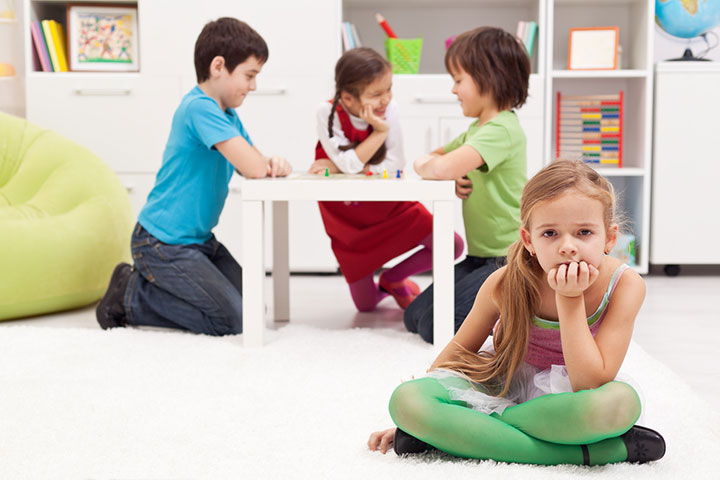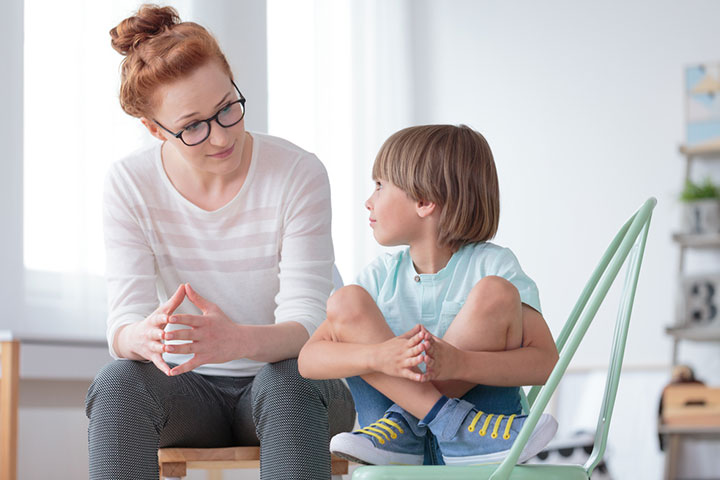
Image: Shutterstock
Childhood thrives on friendship. It is a source of joy, and a vital part of social and emotional growth. While making friends may be easy for some, it can be a challenge for others. As a parent, you’re their guiding light in the world of friendships. This article explores the significance of these bonds, why some kids find it tough, and how you can support your child in building meaningful connections. Read on to know more!
The Importance Of Friendship
Image: Shutterstock
Before we delve into how to help your children make friends, it’s important to emphasize the significance of these relationships. Friendships play a vital role in a children’s social and emotional development. They offer opportunities for learning, communication, empathy, and self-discovery. A good friend can provide emotional support, enhance self-esteem, and even boost a children’s overall well-being. Therefore, it’s essential to nurture these connections.
Why Some Children Find It Difficult To Make Friends
Image: Shutterstock
While some children seem to effortlessly connect with peers, others face challenges in building friendships. It’s important to understand the factors that may contribute to these difficulties:
1.Shyness
Some children are naturally introverted or shy, making it harder for them to initiate interactions or join group activities.
2.Social Anxiety
Social anxiety can be a significant barrier to making friends. Children with this condition often fear judgment or rejection, leading to avoidance of social situations.
3.Communication Challenges
Children who struggle with verbal or non-verbal communication may find it challenging to connect with peers. This includes those with speech delays, autism spectrum disorders, or other communication-related difficulties.
4.Lack Of Social Skills
Some children simply haven’t developed the necessary social skills yet. They may not understand the give-and-take of friendship, including sharing, compromising, and listening.
5.Bullying Or Past Trauma
Negative experiences such as bullying or trauma can make children hesitant to trust others and form new friendships.
6.Uncommon Interests
Children who have unique or less common interests may find it harder to find like-minded peers. It can be a challenge to connect when their passions differ from the norm.
How Parents Can Help
Image: Shutterstock
As a parent, you have a significant role in guiding your child through the journey of making and keeping friends. Here are some actionable steps to assist your child in developing meaningful relationships:
Encourage Social Interaction
1. Playdates
Arrange playdates with other children to provide low-pressure opportunities for your child to socialize.
2. Extracurricular Activities
Enroll your child in activities or clubs that align with their interests, allowing them to meet like-minded peers.
3. Community Involvement
Participate in community events or gatherings where your child can interact with a variety of children.
Teach Social Skills
1. Model Behavior
Demonstrate good social skills through your own interactions and relationships. Children often learn by example.
2. Role-Play
Engage in role-playing activities to practice different social scenarios, helping your child develop essential skills like greeting, sharing, and resolving conflicts.
3. Listening
Teach your child the importance of active listening and empathy in maintaining healthy friendships.
Address Shyness And Anxiety
Image: Shutterstock
1. Validate Feelings
Let your child know that it’s okay to feel shy or anxious. Provide emotional support and reassurance.
2. Gradual Exposure
Gradually expose your child to social situations, allowing them to acclimate at their own pace.
3. Professional Help
If social anxiety or shyness significantly impacts your child’s life, consider seeking the assistance of a therapist or counselor.
Build Confidence
1. Celebrate Achievements
Acknowledge and celebrate your child’s accomplishments, no matter how small. Recognize their efforts in social situations.
2. Encourage Independence
Allow your child to make choices and decisions, fostering independence and self-confidence.
Communication And Problem Solving
1. Open Dialogue
Create an environment where your child feels comfortable discussing their feelings and experiences. Encourage them to share both positive and challenging social interactions.
2. Problem-Solving
Teach problem-solving techniques, emphasizing the importance of compromising and finding mutually acceptable solutions.
Monitor And Intervene When Necessary
Image: Shutterstock
1. Keep An Eye Out
Pay attention to your child’s social interactions, looking for signs of bullying or social difficulties.
2. Intervene Gently
If problems arise, step in gently to offer guidance and support without taking over the situation. Teach your child how to handle conflicts constructively.
Foster Diverse Friendships
1. Embrace Differences
Encourage your child to be open to friendships with those who may have different interests, backgrounds, or abilities. This promotes inclusivity and understanding.
2. Be Patient
Building friendships is a process, and it may take time for your child to find their social footing. Be patient and provide consistent support.
Helping your child make and keep friends is a vital aspect of their development. It’s a journey filled with valuable life lessons and experiences. By recognizing the importance of friendship, understanding potential challenges, and actively supporting your child, you can help them develop lasting, meaningful relationships that will contribute to their happiness and growth throughout their lives. Remember that every child is unique, and the path to friendship may vary, but your guidance and love will always be a comforting constant on their journey.

















